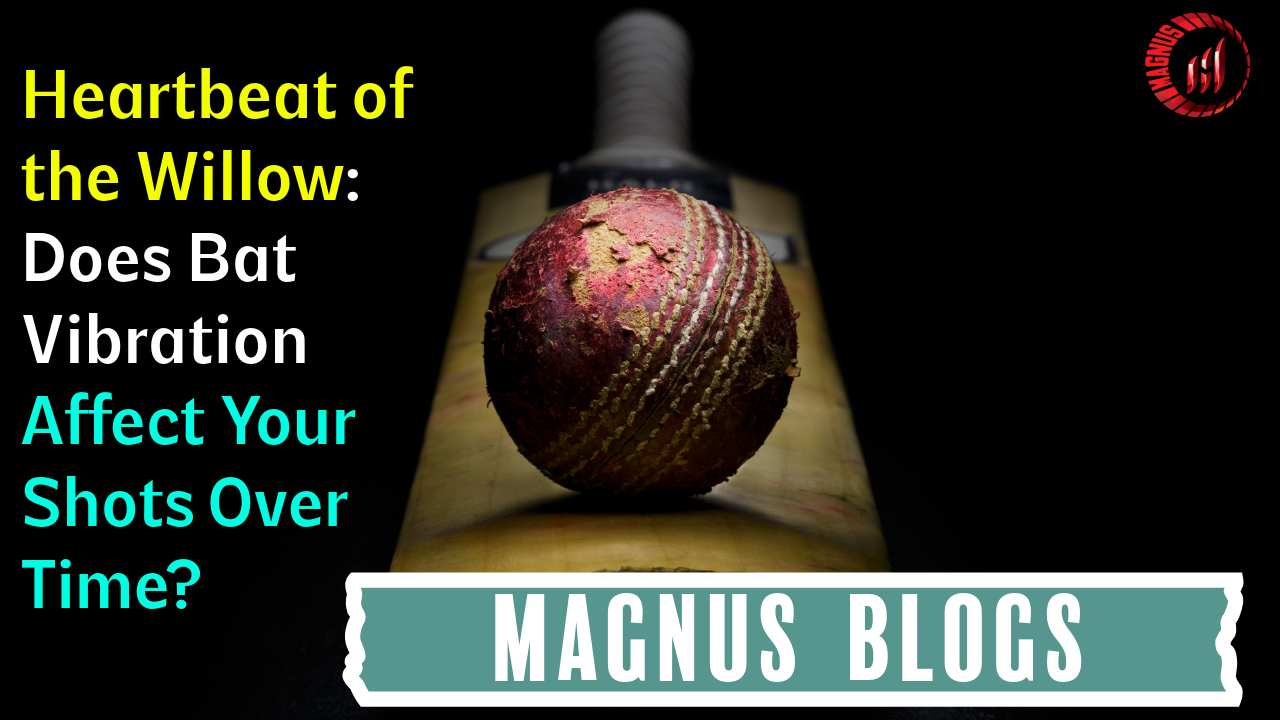In cricket, players often talk about how a bat feels "alive" or "dead" during play. But what if the bat is literally changing beneath your hands? What if every cover drive, pull shot, or defensive block leaves behind tiny invisible echoes within the wood?
Welcome to a deep dive into one of cricket's most mysterious possibilities: how bat vibrations could be subtly altering your bat’s performance over time.

What Happens When You Hit the Ball?
Every time a cricket ball strikes the bat, it sends shockwaves through the willow. These waves:
-
Travel along the handle and blade
-
Cause vibrations — some barely felt, others clearly noticeable
-
Concentrate most intensely at the sweet spot or edges
The force of the ball isn’t just about pushing; it shakes the fibers, compresses tiny structures, and flexes micro-areas of the bat.
Is Vibration Good or Bad for the Bat?
At first glance, vibration is a normal part of batting. Bats are designed to absorb and distribute this energy.
However:
-
Repeated micro-shocks can loosen internal fiber bonds over time
-
Edge hits create higher, sharper vibrations compared to middle hits
-
Cold conditions stiffen the bat and make it absorb vibrations poorly, leading to quicker fatigue
Over thousands of deliveries, even the most beautifully crafted willow may begin to "settle" differently — sometimes favoring certain stroke styles while losing crispness for others.
The Sweet Spot and Vibration Patterns
The famed sweet spot is not just about power — it’s about reduced vibration.
-
Shots hit perfectly on the sweet spot cause minimal vibration — maximum transfer of energy into the ball.
-
Shots off-center cause more vibration, which travels back into your hands and can feel "stingy."
If a bat constantly takes hits slightly off the middle, those repetitive stress points might reshape the bat’s performance at a microscopic level — slightly hardening some zones and softening others.
How Bats ‘Break In’ Naturally Over Time
Cricketers often say, “This bat feels better after a few innings.” That isn’t magic — it’s science:
-
Early usage helps compress and align fibers naturally
-
Vibration assists in "settling" the blade into its peak playing shape
-
A well-used bat often sounds sweeter and feels more responsive than a brand-new one
But this natural break-in has a limit. After a point, too many impacts may cause the blade to lose springiness — making shots feel duller even if the bat looks visually fine.
Environmental Factors: Not All Vibrations Are Equal
Interestingly, the impact of vibration on a bat isn’t the same everywhere:
-
Hot, dry climates allow bats to flex slightly better, absorbing shocks with ease.
-
Cold, damp climates stiffen the wood, making vibrations harsher and damage risks higher.
-
Altitude affects air resistance, which slightly changes how the ball strikes the blade.
Meaning: a bat could "age" faster in England’s early spring matches than under the sun of an Indian summer.
Can You Protect Your Bat from Harmful Vibrations?
Yes — partially. Here’s how:
-
Proper knocking-in helps pre-condition the fibers to handle impacts better
-
Using anti-scuff sheets can slightly dampen harsh shocks
-
Oiling the blade keeps the willow supple, reducing brittleness from inside
-
Avoiding unnecessary net abuse (like cheap hard balls) extends life
Bats are like living instruments. They resonate with every shot — and with careful treatment, they can sing longer.
Cricket bat types, Cricket equipment in usa, Cricket equipment store, Cricket gloves, Cricket helmet, Cricket kit bags, Cricket retailers, Durable cricket gloves, English willow bats, Icc approved helmets., Kashmir willow cricket bat, Latest kashmir willow bat
